The Complete Build Your Own PC Manual Magazine - January 2021

The Complete Build Your Own PC Manual Magazine - January 2021

Go Unlimited with Magzter GOLD
Read The Complete Build Your Own PC Manual along with 9,000+ other magazines & newspapers with just one subscription View catalog
1 Month $9.99
1 Year$99.99 $49.99
$4/month
Subscribe only to The Complete Build Your Own PC Manual
Buy this issue $3.99

In this issue
Save money by building your own PC! Learn that building your own PC is rewarding in a number of ways, from the huge sense of satisfaction it gives, to the potential savings you can make. Whether you have never seen the inside of a computer or you have some basic knowledge, this guide is the perfect way to increase your understanding and bolster your confidence in PC building. Helpfully broken up into three sections: Planning, Building, Software, this book is all you need to build a brilliant first PC.
Choosing a PC Case
Although they may not have seen the sort of massive changes that most other PC components have, the choice of case for your build is now much wider than it was just a few years ago. From simple black boxes, to LED-lit windowed showcases, there is a case style out there for everyone. However, choosing a case should be about more than just looks. Quality and features vary greatly and getting this key component right can mean the difference between a good and a great first build.
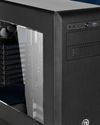
6 mins
Choosing a Processor
The CPU (Central Processing Unit) of your computer is likely to be the most expensive single component, especially if you are trying to future-proof your build as much as possible. When it comes to choosing a processor, faster and newer is almost always better. However, does the average PC builder really need a 4GHz Core i7? Does having a faster CPU always mean having a faster computer overall? What is hyper-threading? Read on to find the answers to these questions and many more.
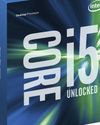
6 mins
The Right RAM
A fast and easy way to add a performance boost to your PC is to install high quality, fast RAM (Random Access Memory). DDR4 is the latest variation of PC memory and is the fastest and most efficient yet but just like many other components in your build, RAM isn’t quite as simple as it might at first seem. Different motherboards support different maximum amounts, as do different operating systems and it is available in many different speeds and configurations.
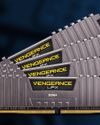
5 mins
Need More Power?
The role of a PC power supply unit is to convert the AC electric power that comes from the mains to the DC power that the computer requires. However, it can do much more than that. A good quality power supply can make your system more efficient, stable and reliable. The power supply is often the first component to fail in an older system, so making sure you understand the full role of the PSU in your build is very important.
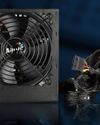
5 mins
Do You Need An Optical Drive?
Building a PC a few years ago without an optical drive would have seemed like madness. It would have made using the PC fairly difficult as most software was supplied on discs and Internet speeds were not really up to the task of downloading large files such as games. Nowadays, almost everything you might want to install on your PC can be bought electronically and discs are becoming somewhat obsolete. So do you actually need to install a CD/DVD drive?

2 mins
Expansion Cards and Extras
Expansion cards are technically any printed circuit board that can be added to the system to add functionality or features. This means that a graphics card is an expansion card, albeit a fairly fancy one, and you can run a PC without including one, assuming the motherboard has on-board graphics. Here we will look at some of the other expansion card options you may want or need in your build.
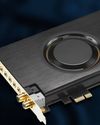
2 mins
Preparing the Case
Choosing a case used to be almost an afterthought when building a custom PC. One grey box was much the same as another grey box. Thankfully the days of grey boxes are well and truly over and our choice of PC case ranges from tiny media boxes designed to go next to a TV, to bespoke glass towers aimed at those who want to show off their perfectly co-ordinated components. However, whichever case you choose, some preparation is needed before beginning your build.
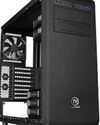
2 mins
Navigating Your Motherboard
We will be referring to specific parts of the motherboard in detail as we work our way through the build but for now it is a good idea to familiarise yourself with how a standard motherboard is laid out, where the sockets and ports will be, and what they look like. There will be some slight variations in location of sockets and features between different motherboards but most will follow this general layout pattern.

6 mins
Fitting the Memory Modules
The DIMM’s, or Dual In-line Memory Modules, are modules that contain several RAM or SDRAM chips on a small circuit board. Most motherboards will have multiple memory module sockets, usually arranged in pairs. When you buy memory modules, they are usually sold as a matched pair; this ensures that they have the same latency, or in other words the same memory reaction time.
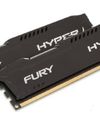
2 mins
Fitting The Motherboard Into The Case
If you have been following the steps of the build so far, you should now be in a position to fit the motherboard, along with the fitted CPU, cooler and RAM, into your prepared case. This not only involves screwing the board into place but also correctly connecting all the case controls like the power switch, HDD LED, front USB ports etc.. Your motherboard will also have been supplied with a back plate.

4 mins
Final Checks and First Boot
If you have followed all of the build steps thus far, you should now be at the point where the first boot up is looming. Before you do, it is worth going back and checking that everything is ready, all cables are connected and everything is looking good. First boot doesn’t mean that you can’t go back and change things later but you can avoid problems by doing a few simple checks.

5 mins
Troubleshooting Your Build
Hopefully, if you have followed all of our instructions carefully, you won’t have any problems during the first boot of your new PC. However, problems can and do occur, even for experienced builders. The difference between a beginner and an experienced builder is the ability to solve problems and troubleshoot the PC build. If you have a problem with your computer, it will likely be one of these.
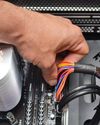
5 mins
The Complete Build Your Own PC Manual Magazine Description:
Publisher: Papercut Ltd
Category: Computer & Mobile
Language: English
Frequency: Half-yearly
Save money by building your own PC! Whether you have never seen the inside of a computer or you have some basic knowledge, this guide is the perfect way to increase your understanding and bolster your confidence in PC building. Helpfully broken up into three sections: Planning, Building and Software, this book is all you need to build a brilliant first PC.
 Cancel Anytime [ No Commitments ]
Cancel Anytime [ No Commitments ] Digital Only
Digital Only